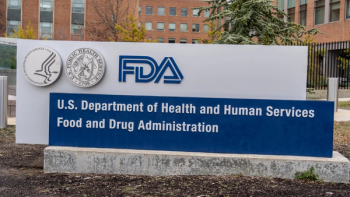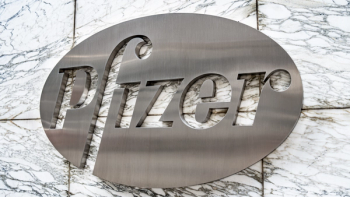Key Takeaways
- Promising ADC Efficacy in Resistant Ovarian Cancer: Lilly’s investigational FRα-targeting ADC, LY4170156, showed a 55% response rate at the proposed Phase II dose in platinum-resistant ovarian cancer, even among patients previously treated with mirvetuximab soravtansine.
- Broad Activity Across FRα Expression Levels: The therapy demonstrated anti-tumor activity regardless of FRα expression, potentially expanding the eligible patient population beyond current ADC limitations.
- Manageable Safety Profile with No Neuropathy Observed: Common adverse effects included nausea, anemia, and fatigue, with no treatment-emergent neuropathy or ocular toxicity observed—supporting further development into Phase III trials.
Results from a Phase Ia/Ib trial show that Eli Lilly’s LY4170156, an antibody drug conjugate (ADC) targeting folate receptor alpha (FRα), demonstrated notable anti-tumor activity in women with heavily pre-treated, platinum-resistant ovarian cancer. The treatment showed anti-tumor activity across all dose levels and FRα expression levels, including in patients previously treated with mirvetuximab soravtansine. The full results were presented at the 2025 American Society of Clinical Oncology Annual Meeting.1
Could Lilly’s Next-Generation ADC Change Treatment for Platinum-Resistant Ovarian Cancer?
"ADCs have begun to change the treatment paradigm for some women with ovarian cancer, but a large proportion of patients still have a significant need for new therapies that improve outcomes regardless of FRα expression level," said Isabelle Ray-Coquard, MD, PhD, president, ENGOT (European Network of Gynecological Oncology Trial) group, medical oncologist, Centre Léon Bérard Lyon France, principal investigator for the trial, in a press release. "These initial data show activity across all doses and levels of FRα expression, including in patients previously treated with a FRα targeting treatment. Taken together with the emerging safety and tolerability profile, these data demonstrate early potential to meaningfully improve outcomes for women living with advanced ovarian cancer."
Trial Design and Patient Population
- At the time of data cutoff, the first-in-human trial had enrolled 95 participants with high-grade serous ovarian cancer across four dose levels.
- From a range of one to 10, patients received a median of five prior systemic regimens, while 15% were previously treated with mirvetuximab soravtansine.
- Fifty-one percent had tumors with FRα expression less than 75%.
- Around 34% had FRα expression of 75% or higher, with results pending for 16%.
- The primary endpoints of the study were safety, pharmacokinetics, and anti-tumor activity per RECIST v1.1.
Efficacy and Safety Outcomes
- Results showed that among the 58 efficacy-evaluable patients administered LY4170156, the overall response rate (ORR) was 45%, with a 55% ORR observed at the proposed Phase II dose of 4 mg/kg.
- Disease control rate was 74% among these patients.
- Common treatment-related adverse events included nausea, anemia, fatigue, vomiting, diarrhea, and neutropenia.1
Ovarian Cancer Landscape and Outlook
According to the American Cancer Society, ovarian cancer remains one of the leading causes of cancer-related deaths among women in the United States. By the end of 2025, it is estimated that there will be approximately 20,890 new cases as well as 12,730 deaths in the United States. Ovarian cancer is most common in older women, with a median diagnosis age of 63 years or older.
The disease is more commonly diagnosed in White women than in Black women. The overall risk of a woman developing ovarian cancer in her lifetime is one in 91, while the chance of death is an estimated one in 143.
From 1990 to the mid-2010s, the incidence rate of ovarian cancer declined between 1% to 2% per year, increasing to nearly 2% per year between 2012 and 2021. Additionally, the rate of ovarian cancer-related deaths has decreased by 43% since 1976, mainly due to advancements in treatments.2
What’s Next for LY4170156?
"We are excited to share these first clinical data for our FRα targeting ADC, demonstrating a promising tolerability and efficacy profile across all FRα expression levels," said David Hyman, MD, chief medical officer, Lilly, in the press release. "Based on these results, we believe there is the potential to significantly expand the number of ovarian cancer patients who could benefit from a FRα ADC. We are now focused on rapidly advancing this potential new medicine into registrational Phase III clinical trials."
References
1. Lilly presents first clinical data for its investigational, next-generation FRα targeting ADC in platinum-resistant ovarian cancer at the 2025 ASCO Annual Meeting. Lilly. June 2, 2025. Accessed June 11, 2025. https://investor.lilly.com/news-releases/news-release-details/lilly-presents-first-clinical-data-its-investigational-next
2. Key Statistics for Ovarian Cancer. American Cancer Society. Accessed June 11, 2025. https://www.cancer.org/cancer/types/ovarian-cancer/about/key-statistics.html





